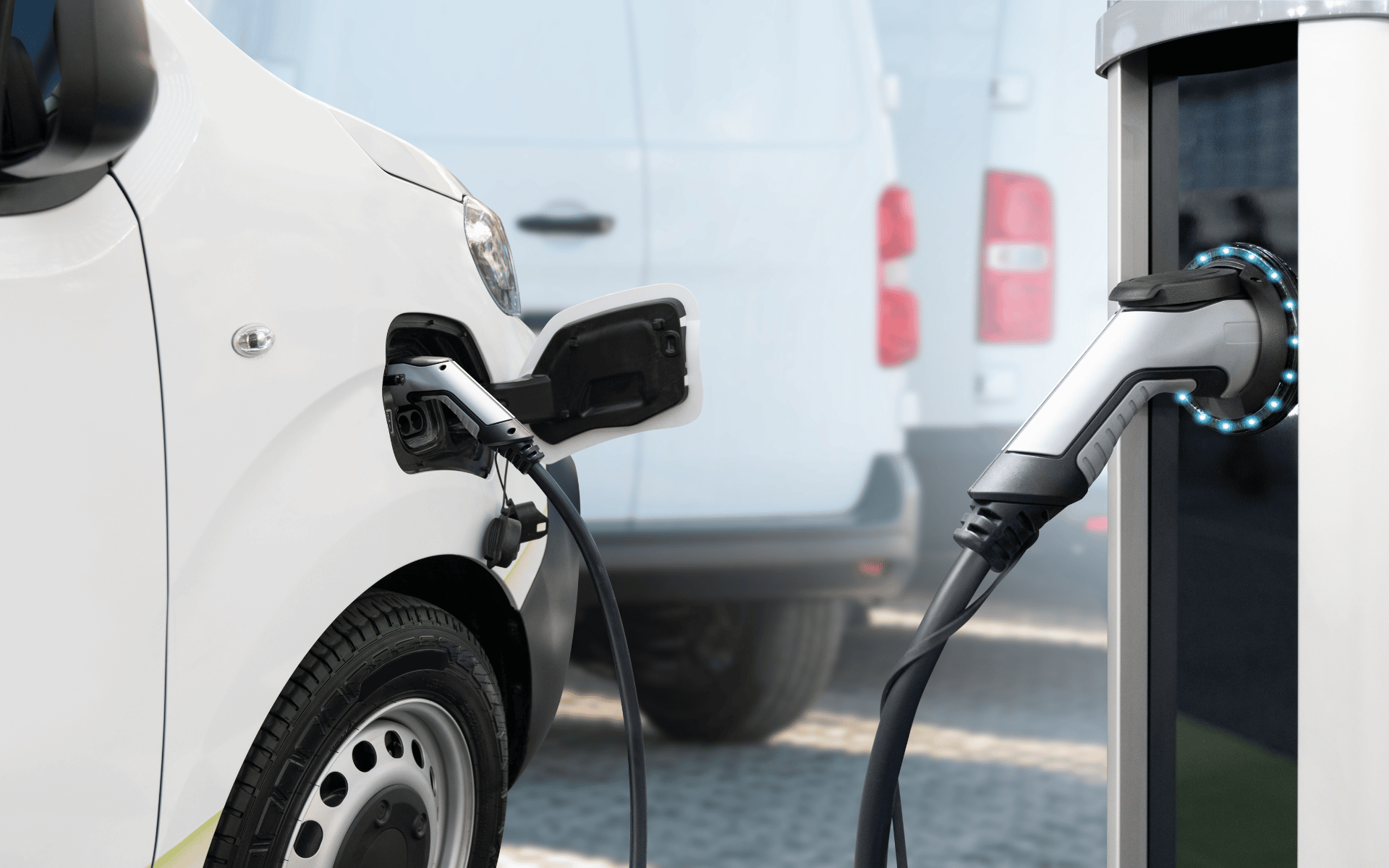Inflation Reduction Act of 2022 and Its Impact on Fleets

4 Min. Read
The Inflation Reduction Act of 2022, which went into effect on August 16th, is a landmark piece of U.S. legislation featuring provisions to reduce the federal deficit, lower prescription drug prices, invest in domestic energy production, and promote clean energy to help meet long-term emissions goals. The White House claims this historic legislation as the country’s single largest investment in climate and energy, including changes in federal tax credit incentives for those switching to electric vehicles.
For fleet managers and drivers considering purchasing an electric vehicle (EV), these tax credit changes may have an impact on your EV purchase plans.
New limitations and effective dates
Previously the $7,500 federal tax credits for EVs were available to all buyers up to the limit of the first 200,000 vehicle sales in a year for each auto manufacturer. While that limitation is going away, fleet managers still need to be mindful of current restrictions on EV tax credits introduced by the Inflation Reduction Act and the greater impact this will have on EV fleets.
The maximum federal credits for a new EV and other qualifying vehicles will remain at $7,500 and will be available until 2032, however, not every buyer or electric car will qualify for this credit. The legislation encourages lower-income buyers to switch from polluting internal combustion engine (ICE) vehicles to EVs.
Restrictions starting in 2023 are based on:
Vehicle price: To qualify for a credit, SUVs, pickup trucks, and vans must cost less than $80,000. The limit for all other types of electric cars is $55,000.
Location of assembly: Final assembly of the vehicle must be completed in North America.
Manufacturing restrictions: To reduce reliance on other countries for parts, there are material sourcing stipulations, particularly for batteries and minerals. If a vehicle meets the critical mineral requirements, it is eligible for a $3,750 tax credit. Likewise, EVs that meet the battery component requirements are eligible for a $3,750 tax credit. Buyers of vehicles meeting both thresholds are eligible to receive the full $7,500 credit. Required sourcing percentages will increase annually as the supply chain in North America continues to expand. One such requirement, for example, is that while battery component percentage requirements are 50% for 2023, they are expected to increase to 100% by 2029.
Income restrictions: For individuals to qualify, married couples must have an adjusted gross income (AGI) of less than $300,000. The top AGI is half of that amount or $150,000 for a single individual.
Used EV credits: Buyers who purchase a used EV at least two model years old are also eligible for tax credits. The credit is either $4,000 or 30% of the price of the car, whichever is lower.
Provisions specifically for commercial vehicles: The legislation also introduced new commercial EV tax credits (up to $7,500 for vehicles weighing under 14,000 pounds, and up to $40,000 for those weighing more). This tax credit will accelerate the electrification of fleets and the reduction of emissions from commercial vehicles.
Actions to take now?
Individuals wanting to replace ICE vehicles with EVs will need to pay extra attention to assembly production sites to ensure the vehicle they select will qualify for the new manufacturing requirements. Current stipulations only require you to know if an electric vehicle has reached the “manufacturer sales cap met” and where the individual vehicle is assembled, so those concerned about meeting this stipulation may want to consider purchasing electric vehicles by the end of the year. Select 2022 vehicles have already reached their maximum sales limit, including Chevrolet Bolts, GMC Hummers, and all Tesla models. The Bolt EV and the Cadillac Lyriq are already capped in sales for 2023.
The U.S. Department of Energy published a list of 2022 and early 2023 model-year EVs that currently meet final assembly requirements. That said, for some manufacturers, select models may be produced or assembled in multiple locations. The vehicle identification number (VIN) decoder website for the National Highway Traffic Safety Administration can guide you in identifying the manufacturer’s location for a specific vehicle.
Countless new EV models are in production, but reportedly many of the EVs available in the U.S. in the coming months might be ineligible for the tax credits given these new stipulations. However, there are many states and local jurisdictions that also offer tax credits. Additionally, there are environmental, social, and governance (ESG) goals, lower maintenance costs, and other factors to consider for your fleet management. So, while it may take the auto industry time to adapt production plans and source domestic materials, potential sourcing issues should not affect EV purchases by those whose income exceeds the AGI threshold, fleet managers, and those buying more expensive vehicles.
Getting expert help
As climate change concerns escalate and people get used to seeing EVs on the road, the move to electrification is rapidly accelerating and the 2022 Inflation Reduction Act will serve to expedite this transition.
If you are looking to add EVs to your fleet and charging stations to your worksite or drivers’ homes, you need an experienced business partner to help in planning and executing this change. Qmerit simplifies fleet electrification by helping overcome the complexities of installation and has a proven track record of success with over 260,000 installations to date. We provide a simple and seamless installation experience across Canada and the United States with service expertise you can trust and depend on, no matter the scale of your project. Qmerit also helps fleets managers budget and control costs while tracking every step of the process.
Qmerit’s expert team is ready to ensure your EV charging installation experience is simple, and we provide guaranteed satisfaction and support. For help determining your EV transition costs and ultimate returns on investment when switching to a distributed electric fleet, contact Qmerit today.
